Traction in select infrastructure segments to keep steel consumption buoyant

Steel is one of the pillars of any modern economy and it would not be wrong to say that, literally, the pillars on which bridges, highways, flyovers, underpasses and other modern, mega structures stand, have steel as their skeletal configurations. Definitely, more than 50 percent of all steels go into buildings and infrastructure. But, even if that be the case, the segment’s per capita steel use is only 31 kg, compared to an average 111 kg for other emerging economies. Which, optimists say, is a good thing because it leaves the door ajar for increased steel usage in the future. And, with construction and infrastructure set to drive growth in India, and the government of the day pushing for more steel-intensive manufacturing industries and construction practices, the per capita steel consumption is expected to increase to 158 kg in 2031 from the current 62-plus kg and 175 kg in 2025, by when the country would potentially be looking at a 250 million tons (mt) of crude steel consumption opportunity.
Further, there are other adverse factors that are likely to work in favour of India’s infrastructure development and, steel’s too. For one, the country’s per capita electricity consumption is among the lowest at less than 2,000 kWh. India’s per capita rail infrastructure is the lowest at 53 km per million population compared to 716 in the US, 610 in Russia, 476 in France and 74 in China. Large sections of the population still lives in non-metal/RCC roofed housing. India’s steel-to-cement ratio in construction is the lowest at 0.30 compared to 1.50 in the UK, 1.19 in the US, 1.10 in Germany and 1.07 in Japan.
Diese Geschichte stammt aus der April 2019-Ausgabe von Steel Insights.
Starten Sie Ihre 7-tägige kostenlose Testversion von Magzter GOLD, um auf Tausende kuratierte Premium-Storys sowie über 8.000 Zeitschriften und Zeitungen zuzugreifen.
Bereits Abonnent ? Anmelden
Diese Geschichte stammt aus der April 2019-Ausgabe von Steel Insights.
Starten Sie Ihre 7-tägige kostenlose Testversion von Magzter GOLD, um auf Tausende kuratierte Premium-Storys sowie über 8.000 Zeitschriften und Zeitungen zuzugreifen.
Bereits Abonnent? Anmelden

Steel's Net Zero mission
The country’s commitment to achieving Net Zero within a targeted timeframe will now propel its steel sector towards a sustainable future in line with global trends.
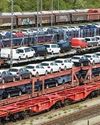
Fuel Price Hike, Supply Chain Disruption Hurt Festive Sales
Supply chain disruptions and fuel price hikes have hurt festive sales in a big way as most auto majors posted decline in sales in October.

Seaborne coking coal offers remain range-bound
Seaborne coking coal offers moved in a narrow range in October amid global supply tightness and healthy spot demand.
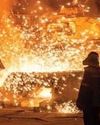
Global crude steel output down 8% in September
China manufactured 74 mt in September, fall of 21% y-o-y while India’s production went up by 7% to 10 mt.
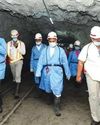
MOIL embarks on expansion projects
“Even though our country is blessed with manganese ore reserves, we import 50% of the domestic requirement. We have to lower our import dependence and save precious foreign exchange.” Ram Chandra Prasad Singh, Steel Minister

Iron ore handled by major ports down 17% in H1
The 12 major Indian ports handled 27 mt of iron-ore during H1 of 2021, down by 17% from 33 mt recorded for the corresponding period of previous year.
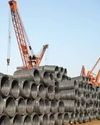
Shrinking China output to boost India exports
“In the third quarter of 2021, the company actively responded to the pressure from external policies, such as production curtailment and dual control system on energy consumption and intensity, as well as coal resource shortage and surging prices.” Baoshan Iron and Steel Co Ltd
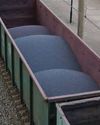
Indian Railways' iron-ore handling up 25% in H1
Indian Railways in April-September of 2021 (H1) transported 84 mt of iron ore, up by 25% over 67 mt during April-September 2020.
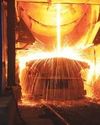
September crude steel production up 7.2% y-o-y
India’s crude steel production in September 2021 grew 7.2 percent to 9.547 million tons (mt) over September 2020 but was down by 3.2 percent from August 2021 output, provisional steel ministry data showed.

“Five enablers: way forward to sustainable cleaner steel”
Right and scalable technology, appropriate policy guidance by government, access to finance to fund transition, willingness of customers to pay for cleaner products and infrastructure for use of new technologies are the need of the hour for the sustainable and cleaner steel industry, according to Madhulika Sharma, Chief Corporate Sustainability, Tata Steel.